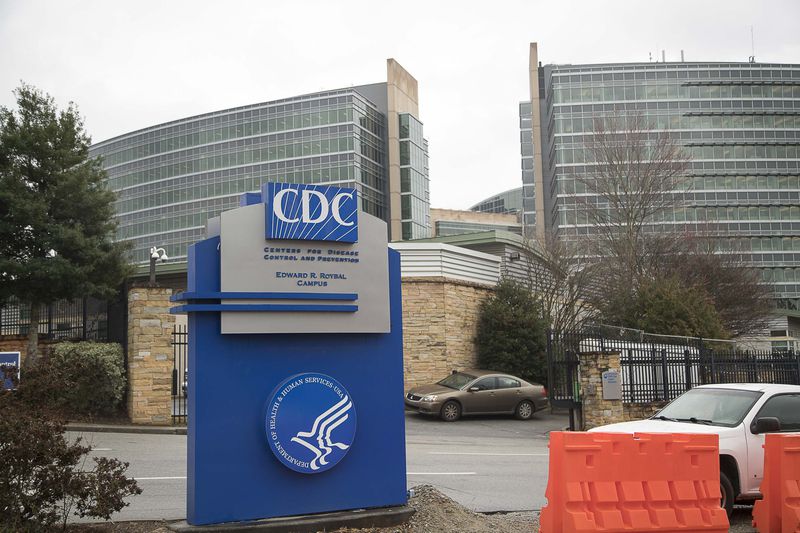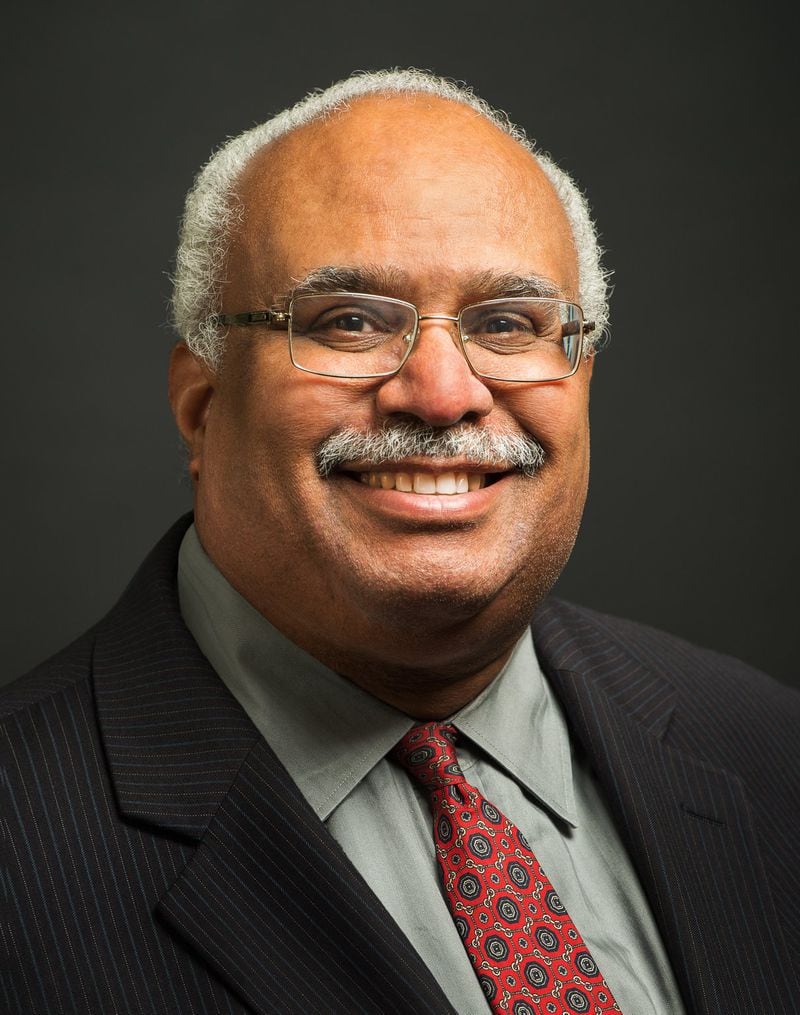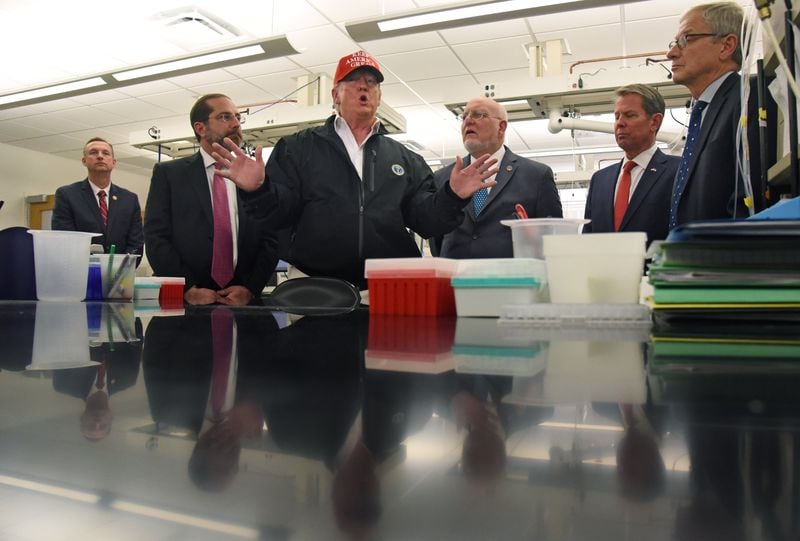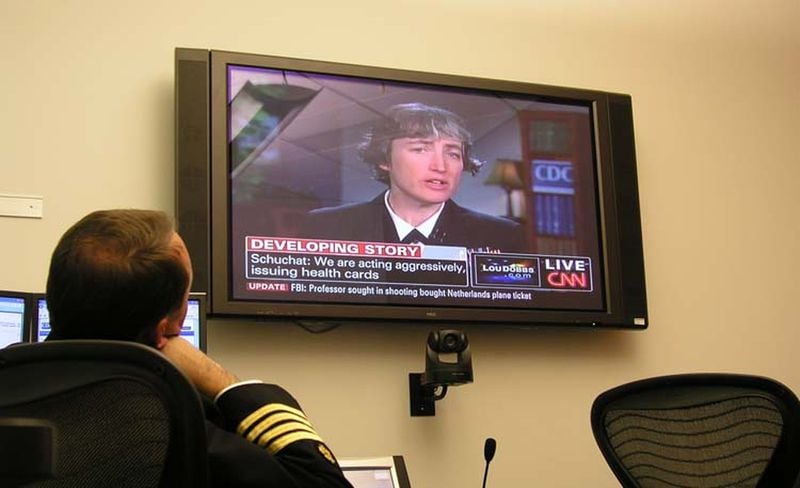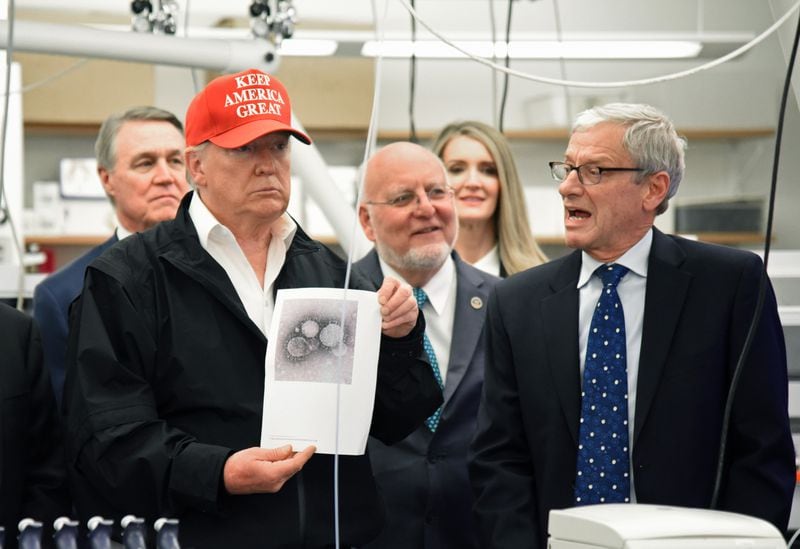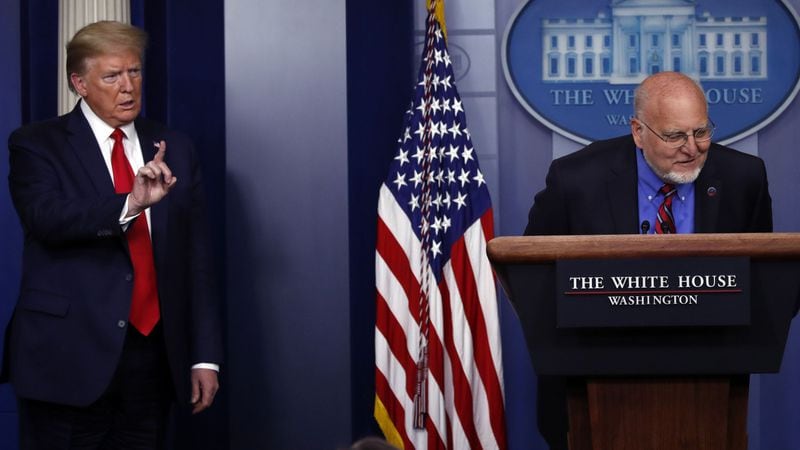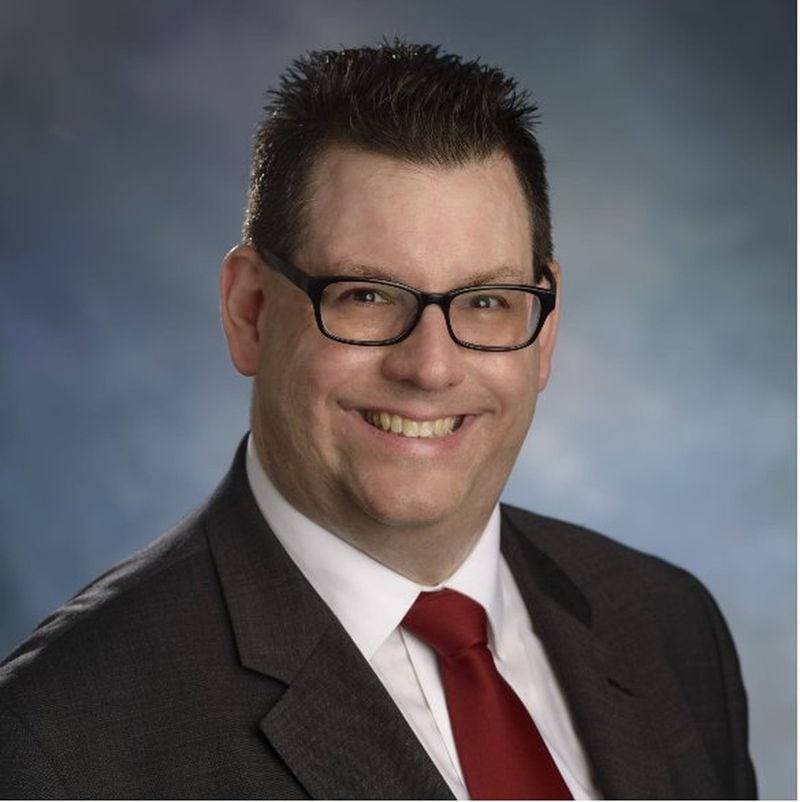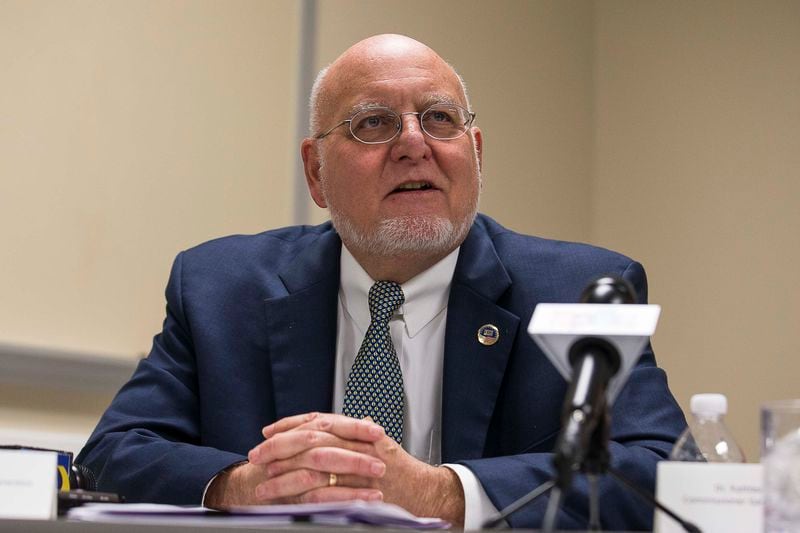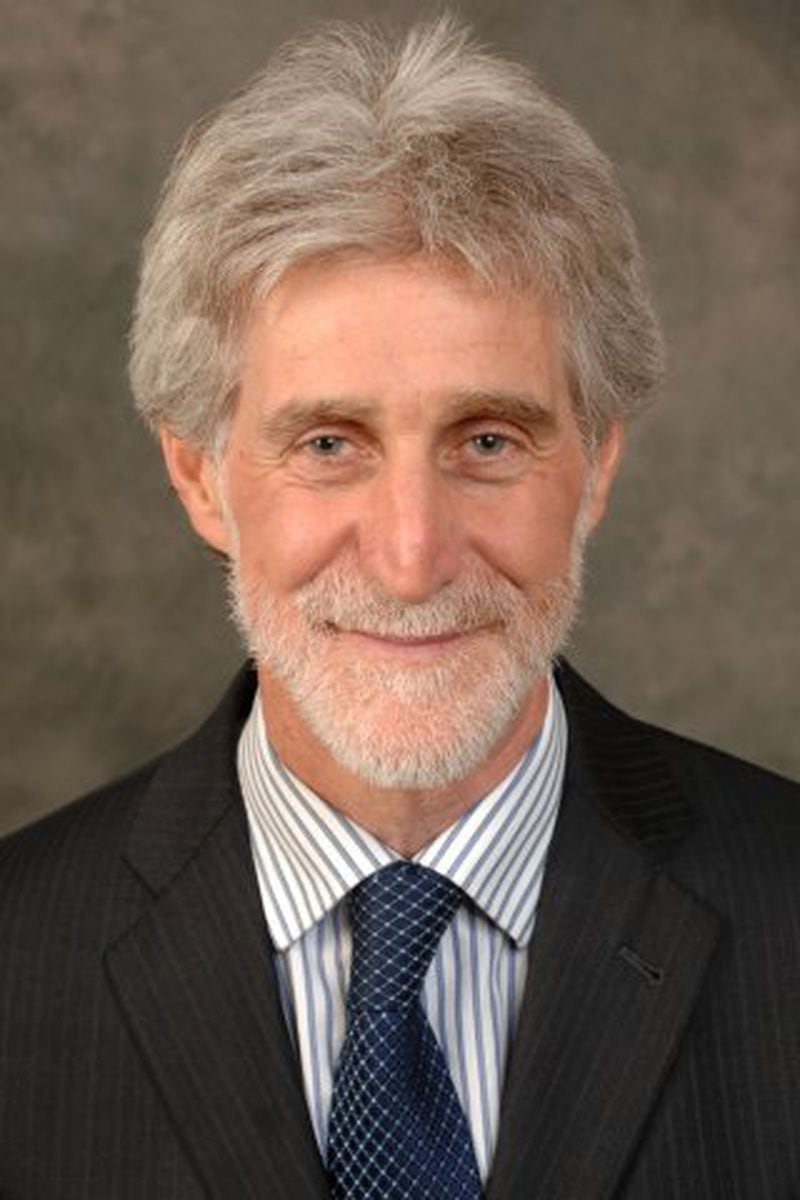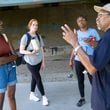Frustrated CDC employees and public health experts are sounding alarms about the Atlanta-based agency, worried that its own leadership has irreparably damaged its standing and influence by undermining the scientists battling the pandemic.
Too often, some inside and outside the Centers for Disease Control and Prevention say, Director Robert Redfield has been hesitant when decisive action was needed, largely absent from the national stage when the public was looking for leadership, and acquiescent when asked to bend to political considerations.
“I’ve heard much more in the media from (Dr. Tom) Frieden, former head of CDC, during the COVID-19 response than Redfield. Where’s Redfield?” a long-time employee told the AJC. “I’m also disturbed Redfield hasn’t spoken up when Trump says something outrageous and possibly dangerous. He’s contributed to a weak federal response.”
» COMPLETE COVERAGE: Coronavirus in Georgia
The situation has taken a personal toll as skepticism of the CDC builds on social media, the staffer said. "It's tough to have family and friends (some I haven't heard from in years) call to ask why CDC was so slow to respond, why they insisted on developing their own tests, or why CDC-reported numbers don't seem to mesh with other data sources," the employee said, speaking on the condition of anonymity because the federal government strictly prohibits employees from talking to the news media without authorization.
Credit: Alyssa Pointer
Credit: Alyssa Pointer
Public health experts told the AJC they're worried that compromised science has crippled the nation's diseases-fighting arm during the worst pandemic in a century, creating delays and confusion that likely led to more deaths. They question whether Redfield is the right leader to address agency failings that the pandemic revealed and restore its battered credibility.
“It’s clear that he lost the trust of the White House, in that he was left out of many of the press conferences,” said Peter Lurie, president of the Center for Science in the Public Interest. “I also think that Redfield is a poor communicator, and that showed especially in congressional testimony.”
» RELATED: Nursing homes now must report suspected COVID-19 cases and deaths
» MORE: Could protests lead to an uptick in coronavirus infections?
Now that the Trump Administration appears to be loosening its grip on the agency, allowing Redfield to resume press briefings, the scientific community will be watching to see if the agency can reclaim its position as the nation’s premier authority on controlling disease outbreaks.
“I’m worried about the CDC, for sure,” said Georges Benjamin, executive director of the American Public Health Association, a national organization of health professionals that lobbies at the federal level. “It’s like anybody else who’s been stifled. People are not quite sure what they can and cannot do, but I hope that will go away over time, and when I say over time, I mean quickly.”
Mark Rosenberg, who spent 20 years working for the CDC and 16 years as president and CEO of the Task Force for Global Health, said his contacts within the agency have described a tightened pre-clearance process for releasing data or research, going beyond a review of the finished work before publication. Now with coronavirus research, scientists must seek permission from higher-ups before they can even begin writing up their findings, and decisions can be based on political motives of White House or Department of Health and Human Services administrators, Rosenberg said.
“That is scary,” he said. “The people I know at CDC tell me that they never, ever have seen censorship as limiting and pervasive as it is right now. And we hurt ourselves by limiting what the scientists can say.”
One employee, responding to written questions from the AJC, described tightened controls on data the CDC compiles. “Now (disease) surveillance data is currently being either criticized for not aligning with or manipulated to align with the administration’s narrative,” the staffer said, attributing the problems to several layers of leadership failures, inside and outside of the agency.
Credit: HYOSUB SHIN / AJC
Credit: HYOSUB SHIN / AJC
That employee and another CDC health scientist communicated with the CDC through Colin Smith, past president of the Georgia Public Health Association and a clinical assistant professor at Georgia State University’s School of Public Health. Smith, who has trained CDC epidemiologists, agreed to convey questions and answers to protect the identity of the mid-level employees, who were concerned they would be fired if they spoke directly with the AJC.
Redfield declined an interview request for this story, issuing a written statement instead.
“From the very beginning, our team at the CDC has worked around the clock to research this disease, develop tests, therapeutics, and vaccines, educate the public, and provide support to state, local, tribal, and territorial health departments,” his statement says. “I will always support and promote the CDC’s work as we combat this pandemic. Our mission to protect Americans and save lives requires us to put ourselves aside and step up in the interest of the greater good.”
» MORE: Medical journal blasts White House for ‘hobbling’ the CDC
» RELATED: CDC, states' reporting of virus test data causes confusion
The director recently held the CDC’s first briefing since March 9, when they stopped for reasons that haven’t been fully explained. He used the opportunity to deny that the agency’s surveillance system failed to detect the virus’ early spread, assuring reporters the CDC had “eyes on the disease” as it entered the country in January and February.
A CDC spokesman said employees complaining of interference are not accustomed to the “whole of government” response to the crisis, which involves multiple agencies and can see CDC input changed or adapted to meet higher priorities.
“This is an unprecedented response,” the spokesman said. “What you may be hearing from are some folks who are growing tired and weary and may have grown frustrated by the process of getting things cleared and out the door.”
» FROM 2018: Potential CDC director has plenty of critics and fans
» MORE: US shelves detailed CDC guide to reopening country
The spokesman, who declined to be identified because he wasn’t authorized to speak to the media by name about the issue, also said that while the agency might have preferred to be out front talking to the public over the past three months, it still has close to 5,000 employees working on various efforts to contain the virus, including airport screening, producing guidance documents, and working daily with state health departments, hospitals and private businesses. Redfield has a position on the White House coronavirus task force, but “the administration calls the shots,” the spokesman said.
The White House disputes that it throttled the CDC, saying the agency’s research is relayed to the public through White House press briefings. “The White House and CDC have been working together in partnership since the very beginning of this pandemic to carry out the president’s highest priority: the health and safety of the American public,” an emailed statement from a deputy press secretary said.
Series of embarrassments
The CDC was established in the South in its earliest incarnation to battle the spread of malaria after World War II and has become a vital Atlanta institution, with some 16,000 of its 23,000 full-time employees and contractors based in the area. The agency shined on a global stage in the races to contain H1N1 and Ebola, and developers are leveraging its presence in plans for an Atlanta health care innovation district that could lure thousands of high-paying jobs.
But the CDC fumbled badly early in the coronavirus pandemic, with the botched rollout of the first test kits while the disease gained a foothold. Then, the agency’s changing guidance as it kept learning about a disease scientists had never seen confused the public and emboldened those who wanted to downplay the threat of the virus, one of the employees said.
“Aside from not having an effective, data-driven response,” the other CDC scientist said, “the general public is becoming confused and distrustful of CDC’s messaging and data. While things generally change in a response as more is learned, this is being spun as incompetence by those who should be supporting and collaborating with the agency.”
Perhaps more damaging to the agency’s standing was a succession of incidents where the CDC was called to account for contradicting the president’s narrative of the virus being under control. Over months, the critics say Redfield maintained a sheepish posture and CDC receded to a supporting role on the coronavirus task force.
The CDC first appeared to fall out of the administration’s graces when the head of the agency’s immunization and respiratory disease branch told reporters on Feb. 25 that a U.S. outbreak of COVID-19 was inevitable. “It’s not so much a question of if this will happen anymore, but rather more a question of exactly when this will happen — and how many people in this country will have severe illness,” Dr. Nancy Messonnier said.
Stock prices took a dive, and Trump, still insisting that the U.S. impact would be minimal, reportedly became enraged. That prompted the White House's coronavirus task force to hold off on presenting him with a mitigation plan that called for cancelling school and mass gatherings, quarantining, social distancing and aggressive testing, The New York Times has reported. A pair of London-based epidemiologists have calculated that this delay cost tens of thousands of American lives.
Credit: HYOSUB SHIN / AJC
Credit: HYOSUB SHIN / AJC
The following week, the president came to Atlanta for a tour of the CDC. While he boasted of its work, he also lashed out at Washington Gov. Jay Inslee for criticizing the administration's response to the disease, called CNN "fake news," said he had a natural ability for understanding medicine, told reporters he preferred having passengers aboard an infected cruise ship remain on board, and asserted, "Anybody that wants a test can get a test."
Redfield did not correct the president on any point. Instead, he thanked Trump for his “decisive leadership” and said “the general risk to the American public remains low.”
Epidemiologist Bruce Weniger spent 15 years leading vaccine-delivery technology development for CDC and served as a foot soldier during the H1N1 flu pandemic. Now an adjunct associate professor at Emory University, Weniger said he was dismayed to see the head of his former agency reduced to a campaign prop.
“Any other CDC director, in my opinion, who had been standing next to him when he heard him say, ‘Everyone can get a test, and blah blah blah,’ would have walked off the camera,” Weniger said.
For some former CDC officials, no incident illustrates their current frustrations like the April 3 White House media briefing, where it was Trump who announced the CDC’s recommendation that Americans wear cloth or fabric masks when venturing out. With Redfield watching, Trump added that the recommendation was only voluntary, and he didn’t want to wear a mask himself.
“Sitting in the Oval Office,” Trump said, “behind the great, beautiful Resolute desk, I think wearing a face mask as I greet presidents, dictators, kings, queens — I just don’t see it for myself.”
Later in April, Trump became incensed again at messages coming out of the CDC when an article in The Washington Post, quoting Redfield, warned of a second, more devastating coronavirus wave in tandem with the fall-winter flu season.
After fuming about “fake news” in a daily news conference, Trump called on Redfield to step to the podium and say he’d been misquoted. Redfield conceded that the Post quoted him correctly about a second wave being “more difficult” but said that did not mean it would be “more devastating,” the word used in the Post headline.
“I’m confident that the public health infrastructure that we’re putting together now,” he said, motioning to Trump, “across this country so that we can early case diagnose, isolate, and contact trace — as I say, block and tackle, block and tackle — that system is going to be there, and we’re going to be able to contain this virus.”
» RELATED: CDC report finds some gargling with disinfectant to prevent COVID-19, a dangerous behavior
» MORE: One Albany hotspot hospital now free of COVID-19 patients
Last month, several news organizations reported that the White House had shelved the CDC's detailed guidance for reopening schools, churches, restaurants and other businesses. Redfield denied that. So did the White House press secretary, saying Redfield had never seen, much less signed off on, the report.
After the Associated Press obtained emails revealing that Redfield had cleared the guidance, the CDC quietly released a watered-down version. Edits included telling employers to “encourage” rather than “ensure” social distancing, and removed from the document were passages recommending businesses keep a five-day supply of personal protective equipment on hand and to consider not reopening if they’re in a hot zone.
Smith, the Georgia State University professor, said that CDC scientists in general try to be apolitical. “And for them to feel that they are receiving outside political interference in their work, and/or their work is being discredited by politicians, is somewhat hard to hear,” he said.
‘Religious agenda’
Some say that CDC’s problems may be because Redfield, unlike the two previous CDC directors, had never run a U.S. public health agency before Trump appointed him.
The Center for Science in the Public Interest had opposed his appointment on that grounds. A statement by Lurie, its president, also cited Redfield's "extreme religious agenda."
Redfield spent two decades as an Army physician and virologist at Walter Reed Army Medical Center, where he became well-known for his studies on transmission of HIV. He also became known for promoting placing HIV-infected soldiers in quarantine and advocating for a mandatory testing program that led to some soldiers being pushed out of the Army without medical coverage.
A devout Catholic, Redfield aligned himself with an evangelical Christian group called Americans for a Sound AIDS/HIV Policy, which advocated for abstinence-only programs. In his forward to a 1990 book called “Christians in the Age of AIDS,” Redfield criticized those who preach prejudice and deny the AIDS/HIV crisis, but also rejected “false prophets who preach the quick-fix strategies of condoms and free needles.”
Washington lobbyist Tom Sheridan, who worked for the AIDS Action Council to pass the Ryan White CARE Act, recalled Redfield pushing the evangelical group’s agenda while testifying as a medical expert in Congressional hearings. Redfield continued promoting those ideas into the early 2000s, well after they had been scrapped by conventional science, Sheridan said.
Credit: Alyssa Pointer
Credit: Alyssa Pointer
“This guy has represented a suppression of the best that CDC had to offer at one of the worst moments in our public health history,” Sheridan said. “So why would he have any credibility with his own team, never mind with the American public?”
Redfield has since tempered his views on HIV, advocating for syringe services programs and condoms as CDC director. “The true enemy of public health is stigma,” he said after a meeting with Alabama lawmakers and public health officials last year.
Redfield was also investigated by the Army for allegedly misrepresenting data to exaggerate the benefits of an unproven AIDS vaccine called VaxSyn, but he was cleared of scientific misconduct. Later, he became a professor at the University of Maryland School of Medicine and co-founded its Institute of Human Virology.
Lurie, a former associate commissioner for the Food and Drug Administration, said nothing over the past two years has changed his mind about Redfield’s qualifications, though he said Redfield is “also deserving some sympathy in as much as the White House’s expectations are unreasonable.”
Benjamin, with the American Public Health Association, served with Redfield at Walter Reed decades ago and considered him a smart virologist. He said since Redfield will likely be in place at least through year’s end, public health advocates should stand behind him in battling the disease.
“I’ve never felt that Bob was going to undermine the science, and at least so far, I don’t think he has,” Benjamin said. “Hopefully, he can rally his troops and provide that leadership. I know him well enough to know he’s capable of doing it. Will he be allowed to do it, I don’t know.”
There’s a practical and immediate reason to restore the CDC’s relevance and the public trust, said Rosenberg, the former head of the Task Force for Global Health.
When a vaccine arrives, it will fall to the CDC to give recommendations and assurances, he said. Already, the anti-vaccine movement is ramping up its messaging on the web, building mistrust for a vaccine that doesn’t exist yet.
“If the credibility of CDC is undermined, there are large parts of the population that will not believe it when it says everyone needs to get this vaccine and the vaccine is safe and effective,” Rosenberg said. “CDC needs to be authoritative and trusted.”
About the Author
